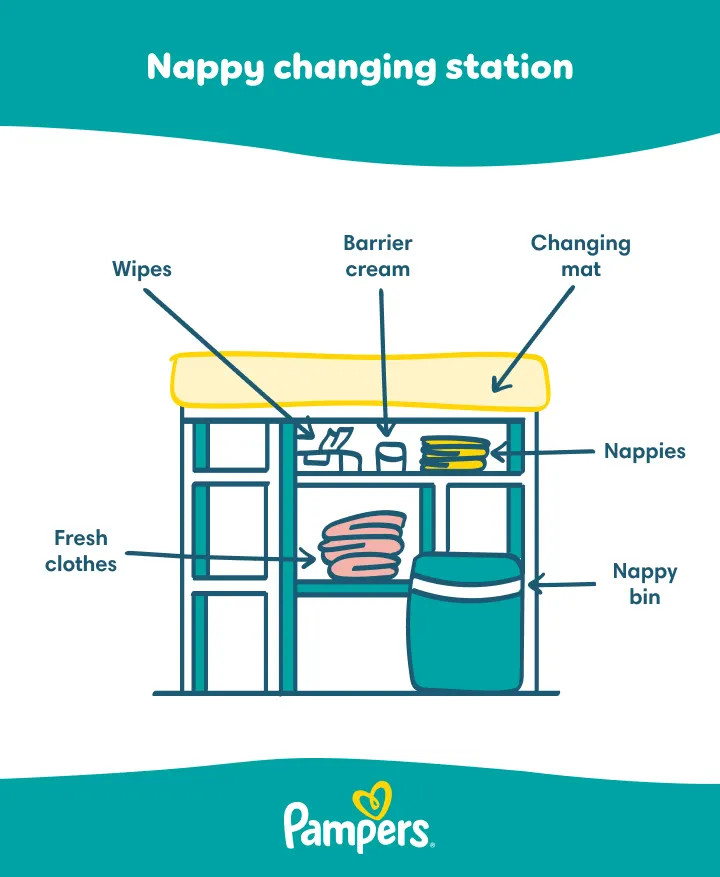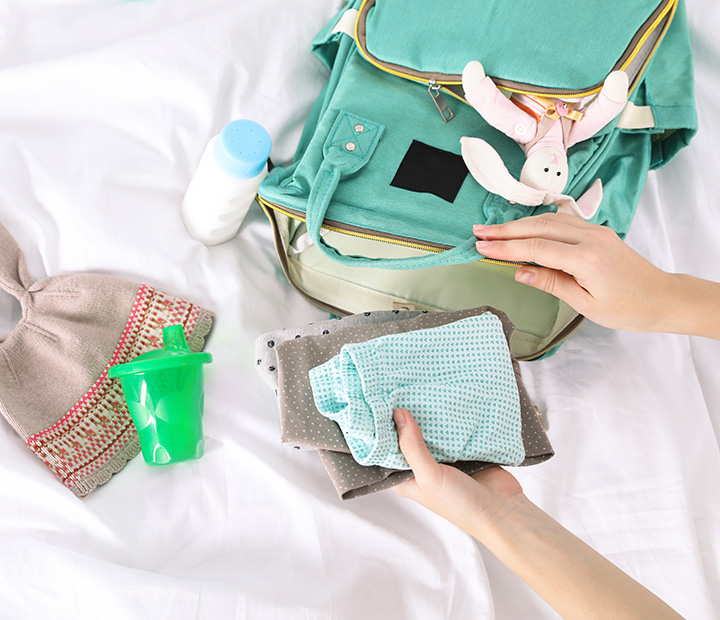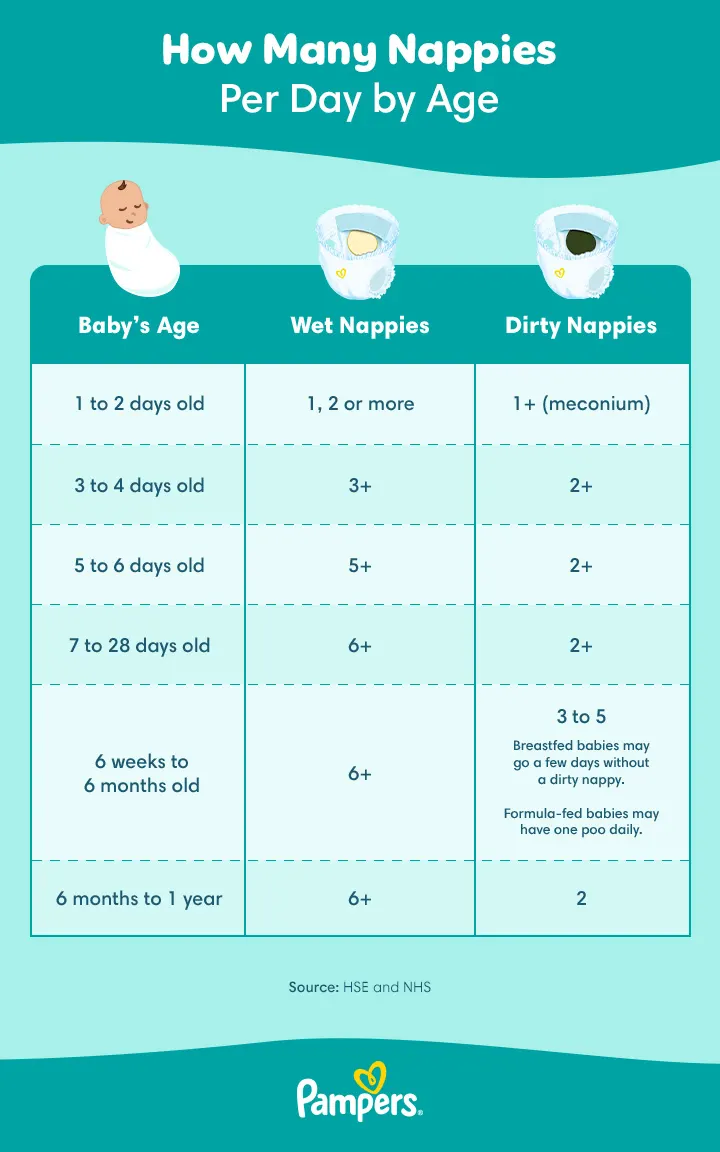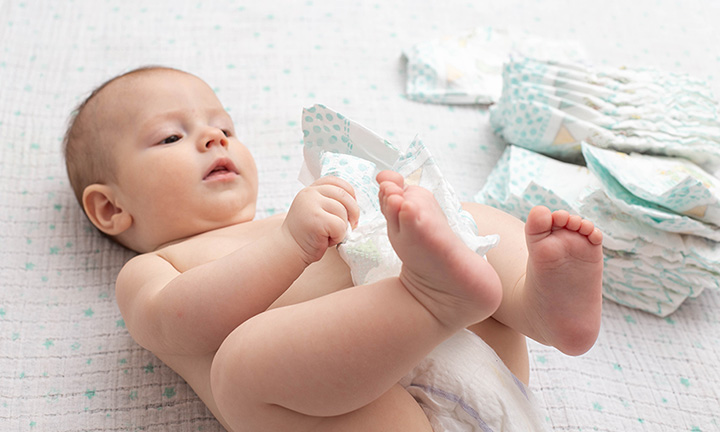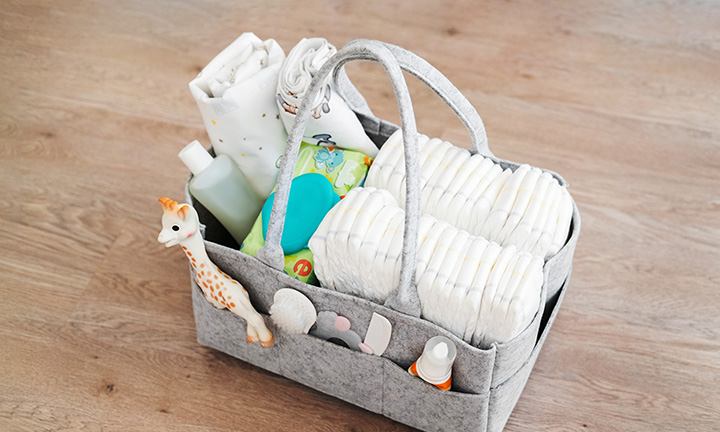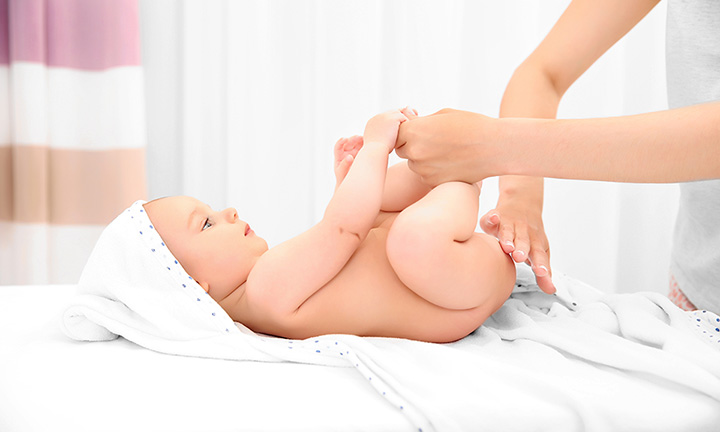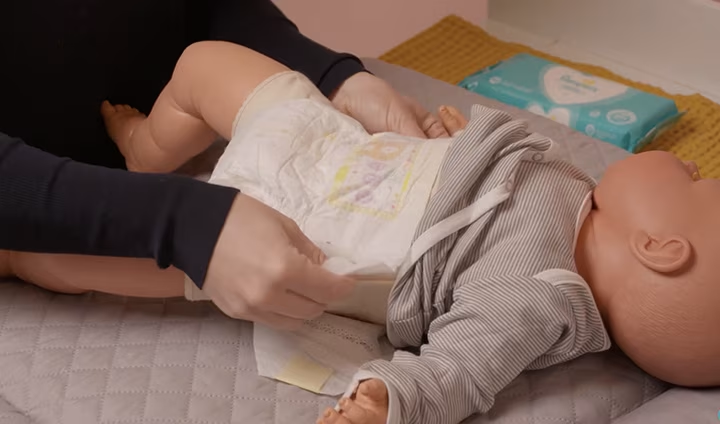
How to Change a Nappy: A Step-by-Step Guide
Nappy changes are a big part of parenting, and while it may take a little practice at first, you’ll soon get the hang of it.
In this guide, we’ll walk you through how to change a nappy step-by-step, with extra tips depending on whether you’re changing a baby boy or a girl. You’ll also learn how often to change a nappy, signs your baby may need a bigger nappy size and how to prevent leaks and poonamis.
What You Need to Change a Nappy?
Having all your essential nappy products ready before a nappy change can make the process smoother and more comfortable for your baby. Here’s what you’ll need:
Setting up a nappy changing station with all your needed nappy products in one place can make changing your baby’s nappy quick and hassle-free. Keeping everything within reach allows you to focus on changing a nappy safely and comfortably.
How to Change a Baby’s Nappy
Before starting, make sure you have everything you need within reach. Having your essential nappy products close by will make the process smoother. Once you’re ready, here’s how to change a nappy step-by-step:
Step 1: Remove nappy.
Lay your baby down on their back and carefully undo the fastening tapes. Lift your baby’s bottom slightly by holding their ankles and slide the used nappy out. Roll it up, secure it with the tabs and place it in a nappy bin. If disposing of it in a household rubbish bin, use a nappy sack to help contain odours.
Step 2: Clean the nappy area.
Gently wipe your little one’s skin, ensuring you clean between the folds. Use gentle wipes such as our Pampers Sensitive Wipes or a washcloth, always wiping from front to back to help prevent infections.
Step 3: Care.
If your baby has a nappy rash, applying a thin layer of barrier cream may help protect their delicate skin. If the rash persists, consult your GP.
Step 4: Fresh nappy.
Gently lift your baby’s legs and slide a clean nappy underneath their bottom. The fastening tapes should be positioned at the back. Pull the front of the nappy up over your baby’s tummy.
Step 5: Fasten nappy.
Secure the nappy by fastening the sticky tabs at the front, ensuring it fits snugly but comfortably. You should be able to slide two fingers between the nappy and your baby’s tummy. Check that the leg cuffs are gently pulled out to help prevent leaks.
Once finished, ensure your little one is safe, wash your hands and wipe down the nappy changing area for hygiene.
By following this how-to change a nappy step-by-step guide, you can help keep your little one clean, dry and comfortable.
How to Change a Baby Boy’s Nappy
Follow the above step-by-step o how-to change a nappy guide when changing your baby boy’s nappy. However it’s a good idea to place a cloth or clean nappy over his penis when changing him. This can help prevent any expected wee from reaching you, your surroundings or even his face.
Another tip is to make sure his penis is pointing downwards before fastening the nappy. This can help prevent leaks and keep your little one dry.
How to Change a Baby Girl’s Nappy
When changing your baby girl’s nappy, you can again follow the above step-by-step guide, but remember to always wipe from front to back as this is essential in reducing germs and the possibility of infections.
Make sure to gently clean between the folds of skin, ensuring the area is fresh and comfortable for your little one.
How to Change Your Newborn Baby’s Nappy
If you’re a first-time parent, it may take a few tries to get used to changing your newborn baby’s nappy, but don’t worry – you’ll soon get the hang of it. Just after your baby is born, your midwife, doula or one of the nurses may give you some hands-on lessons.
Your newborn baby’s umbilical cord stump will dry and fall off a week or two after birth. Until then, fold the waistband of the nappy down if necessary to keep it away from the cord stump.
As you wait for the umbilical cord stump to fall off, you might like to use some of the nappy changes as an opportunity to gently clean and dry the umbilical cord area and check for signs of infection, like a yellowish discharge or red skin in the area around the stump. If you do notice anything like this, tell your midwife, health visitor or doctor.
Your baby’s first few poos will be a thick, blackish-green, almost tar-like substance called meconium. This is made up of substances your baby swallowed in the womb. After around 48 hours, it will change to a yellow or mustard colour. If your baby is breastfed, their poo will be soft, runny and odourless, whereas formula-fed babies tend to have firmer, darker and stronger-smelling poo.
Don’t be surprised if you notice a little white or bloody discharge in your baby girl’s nappy in the first few days after birth – this is normal. It’s due to hormones that have passed from your body to your baby’s body via the placenta. The hormones will clear from your baby’s body in a few days.
Also, you might see what looks like a little blood in your newborn’s urine in the first few days. This is likely caused by an over-concentration of urine (called urate crystals) and isn’t blood. This is usually harmless, but let your midwife or doctor know if you spot this.
Be sure to check with your midwife, health visitor or GP if you have any questions about what you’re seeing in your newborn’s nappy.
How to Change Your Toddler’s Nappy
Changing a toddler’s nappy can be trickier than with a newborn, as they tend to wriggle and move around more. Using our step-by-step guide above, follow the same process while keeping these extra tips in mind - depending on whether you’re changing a baby boy or girl.
As your little one becomes more active and approaches potty training, you might find they start resisting nappy changes. This could be a sign they’re ready to transition from nappies to nappy pants. Pampers Baby-Dry nappy pants are a great option for active toddlers - soft, easy to pull on and providing up to 12 hours of dryness.
Always check that the nappy fits securely – toddlers move a lot, so a well-fitted nappy helps prevent leaks. If you notice frequent leaks or red marks around their waist or thighs, it may be time to go up a size.
How Often Should You Change a Nappy?
Experts recommend changing your baby’s nappy after every poo and frequently in between to keep their skin clean and dry. A wet or soiled nappy left on too long can lead to nappy rash.
How often your baby needs a nappy change depends on their age, diet and digestion. Some babies poo or wee after every meal, while others may go once or a few times a day, all of which can be normal.
As a general guide:
How Do You Know It’s Time for a Nappy Change?
Some nappies have a wetness indicator, making it easy to see when your baby’s nappy needs changing.
Other signs your baby may need a nappy change include:
What Are the Signs Your Baby Needs a Bigger Nappy?
If your little one’s nappy is too small, it may feel tight and uncomfortable, increasing the chance of leaks or marks on their skin. Here are some signs that it’s time to move up a size:
For the best fit, check out our nappy size guide to help find the right size nappy for your little one.
What to Do if the Nappy is Leaking
If you start having leaks and poonamis, it might be time to go up a nappy size. As your baby grows, so does the quantity of wee and poo they produce. A bigger nappy may not only fit better but it can also hold more liquid.
Even if the nappy is the right size, if you don’t put it on correctly you could still experience leaks. Double check that you haven’t fastened the nappy too tightly or too loosely, that the tapes are symmetrical and that the leg cuffs are turned out.
FAQS AT A GLANCE
Here are some tips for changing your baby’s nappy:
- Lay your baby on a changing mat and undo the nappy.
- Clean their skin, wiping front to back.
- Apply barrier cream if needed.
- Slide a clean nappy under, pull it up and secure the fastening tapes.
The Bottom Line
Even if nappy changes aren’t always your favourite task, you’ll love knowing your little one feels dry, comfortable and fresh. As you get the hang of it, nappy changes will become quicker and easier, and before you know it, they’ll have become second nature!
Plus, you can make the most of every nappy change by earning rewards through the Pampers Club app. Using your app, simply scan codes inside your Pampers nappy and wipes multi-pack purchases to build up loyalty points. Then, use your loyalty points to redeem against coupons for your favourite Pampers products.
Even if you don't always love nappy changes, you’ll love knowing that your little one feels dry and comfortable in a fresh, clean nappy. Plus, as you become a baby changing pro those nappy changes will become quicker and easier. Before you know it changing nappies will become second nature, and you’ll be able to enjoy the time talking and bonding with your baby as you expertly get your little one changed into a fresh nappy.
How We Wrote This Article The information in this article is based on expert advice found in trusted medical and government sources, such as the National Health Service (NHS). You can find a full list of sources used for this article below. The content on this page should not replace professional medical advice. Always consult medical professionals for full diagnosis and treatment.
Read more about Newborn Baby
Related Articles
Join Pampers Club and get:

